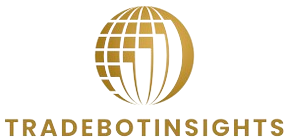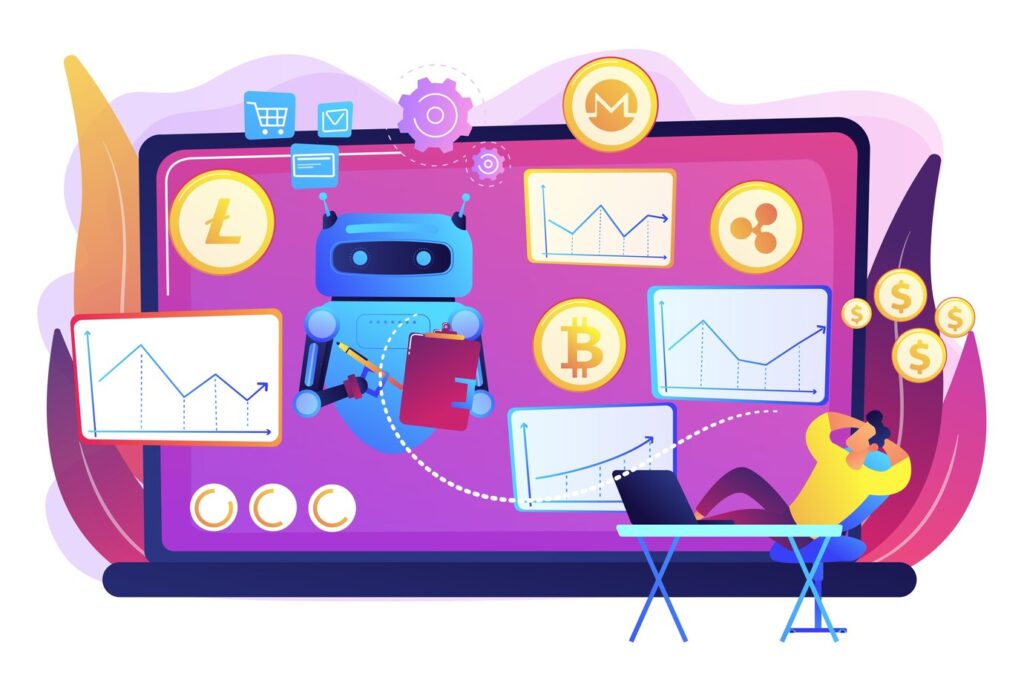The debate between automated and manual trading strategies continues to spark discussions among investors. As technology advances, many wonder: is bot trading inherently better than manual trading? This article objectively compares both approaches, highlighting their respective strengths and weaknesses. By understanding the unique advantages and drawbacks of each method, you can make an informed decision about which approach best aligns with your risk tolerance, skillset, and overall trading goals.
Understanding Bot Trading
Automated trading, often referred to as bot trading, is a revolutionary approach reshaping the dynamics of financial markets. At its core, bot trading involves the utilization of computer programs executing trades without direct human intervention. These algorithms, meticulously designed and programmed, analyze market conditions and make trading decisions in real-time.
Advocates of bot trading highlight its unparalleled efficiency and speed. Unlike human traders, bots can execute orders at lightning speed, taking advantage of market opportunities within fractions of a second. This swift execution is crucial, especially in fast-paced markets where every moment counts.
However, despite their efficiency, bot trading systems are not without limitations. The success of these algorithms hinges on the effectiveness of their underlying programming. Sudden and unforeseen market changes can pose challenges for automated systems, as they may struggle to adapt swiftly, potentially leading to suboptimal performance. This delicate balance between speed and adaptability underscores the complexities inherent in the world of bot trading.
Manual Trading: A Traditional Approach
Manual trading represents the time-honored tradition of human involvement in financial markets. This approach relies on the experience, intuition, and decision-making prowess of individual traders to navigate the complexities of buying and selling assets.
Human Intuition and Adaptability
In manual trading, traders leverage their intuition and experience to interpret market trends and make informed decisions. This human element allows for a flexible and adaptive approach, enabling traders to quickly respond to unforeseen developments. The ability to read market sentiment, understand news impacts, and react with nuanced decision-making sets manual trading apart as a personalized and dynamic strategy.
Challenges of Emotion and Subjectivity
While manual trading harnesses human strengths, it is not immune to challenges. Emotional factors, such as fear, greed, and impatience, can influence decision-making. The subjective nature of interpretation may lead to varied analyses among traders, introducing an element of unpredictability. Striking the right balance between intuition and discipline becomes a crucial aspect of successful manual trading.
Performance Comparison
To provide a comprehensive comparison between bot trading and manual trading, let’s examine their performance across various metrics:
| Metric | Bot Trading | Manual Trading |
| Speed and Efficiency | Executes orders swiftly | Relies on human decision-making |
| Emotional Factors | Eliminates emotional decision-making | Vulnerable to emotional biases |
| Risk Management | Predefined risk management protocols | Subjective risk management approach |
- Speed and Efficiency: Bot trading excels in executing orders swiftly, taking advantage of market fluctuations in real-time. On the other hand, manual trading relies on human decision-making, which may not match the speed of automated systems, especially in high-frequency trading scenarios.
- Emotional Factors: Bot trading eliminates emotional decision-making, which can be a significant advantage in volatile markets. Manual trading, however, is susceptible to emotional biases, such as fear and greed, which can impact trading decisions.
- Risk Management: Bot trading systems come with predefined risk management protocols, ensuring a disciplined approach to risk. Manual trading, on the other hand, relies on subjective risk management approaches, where traders must make decisions based on their own assessment of risk.
In the ongoing debate between bot and manual trading, understanding the nuanced differences in performance is crucial for traders seeking the most suitable approach for their investment strategies. Each method has its strengths and weaknesses, and the choice ultimately depends on individual preferences, risk tolerance, and market conditions.
Risk Management
Effective risk management is a cornerstone of successful trading, whether through bot trading or manual trading. Let’s explore the distinct approaches each method takes in handling risks:
Automated Systems in Bot Trading
Bot trading relies on predefined risk management protocols programmed into the algorithms. This systematic approach ensures a disciplined response to potential risks. Key aspects of risk management in bot trading include:
- Stop-loss Mechanisms: Automated systems often incorporate stop-loss orders to limit potential losses by automatically selling a position when it reaches a predetermined price level.
- Diversification Strategies: Bots can be programmed to diversify portfolios automatically, spreading risk across different assets to minimize the impact of adverse market movements.
- Algorithmic Adjustments: Some sophisticated bots can dynamically adjust their risk parameters based on market conditions, enhancing adaptability to changing landscapes.
Human Decision-making in Manual Trading
Manual trading involves a more subjective and hands-on approach to risk management. Traders rely on their judgment and experience to navigate potential pitfalls. Here are some key elements of risk management in manual trading:
- Judicious Position Sizing: Manual traders often employ careful position sizing to manage risk effectively. This involves determining the size of each trade relative to the overall portfolio, helping to control potential losses.
- Continuous Monitoring: Unlike automated systems, manual traders must continuously monitor market conditions and news events. This vigilant approach allows for swift responses to emerging risks.
- Adaptability to Market Sentiment: Human traders can gauge market sentiment and adjust their risk management strategies accordingly. This adaptability is a unique strength in navigating unpredictable market dynamics.
In comparing risk management between bot and manual trading, it’s clear that each method brings its own set of tools and strategies to the table. While automated systems offer precision and consistency, manual trading leverages human intuition and adaptability. Traders must carefully consider their risk tolerance and preferences when choosing between these approaches.
Adaptability to Market Changes
Adaptability is a crucial factor in navigating the ever-changing landscape of financial markets. Both bot trading and manual trading possess distinct qualities in their approach to adapting to market changes.
Bot Trading Adaptability
Bot trading systems exhibit a level of adaptability rooted in their programmed algorithms. Here’s how automated systems stay attuned to market shifts:
- Algorithmic Flexibility: Advanced bot algorithms are designed to adapt to changing market conditions. They can automatically adjust trading strategies based on predefined parameters and market signals.
- Rapid Response to Data: Bots excel in processing vast amounts of data quickly. This rapid analysis allows them to promptly respond to market changes, making split-second decisions to capitalize on emerging opportunities or mitigate risks.
- Consistency in Execution: Automated systems maintain consistency in executing predefined strategies, even in the face of market fluctuations. This unwavering adherence to the established algorithm contributes to stability in varying market conditions.
Manual Trading Adaptability
Manual trading, guided by human intuition and experience, offers a different perspective on adaptability. Here are key aspects of how human traders navigate market changes:
- Intuitive Decision-making: Human traders leverage intuition to interpret subtle market signals and make decisions. This intuitive approach allows for rapid adjustments to changing circumstances.
- Flexible Strategy Implementation: Manual traders have the flexibility to alter their trading strategies on the fly. This adaptability enables them to respond to unexpected news, economic shifts, or sudden market movements.
- Holistic Market Understanding: Human traders bring a holistic understanding of the market, considering factors beyond algorithms. This broader perspective allows for nuanced responses to complex and rapidly evolving situations.
In the realm of adaptability, the comparison between bot trading and manual trading highlights the intersection of precision and intuition. While bots excel in rapid execution and algorithmic adjustments, human traders bring a dynamic and flexible approach to navigate the uncertainties of the market. Ultimately, the choice between these methods depends on individual preferences, strategies, and the specific nature of the trading environment.

